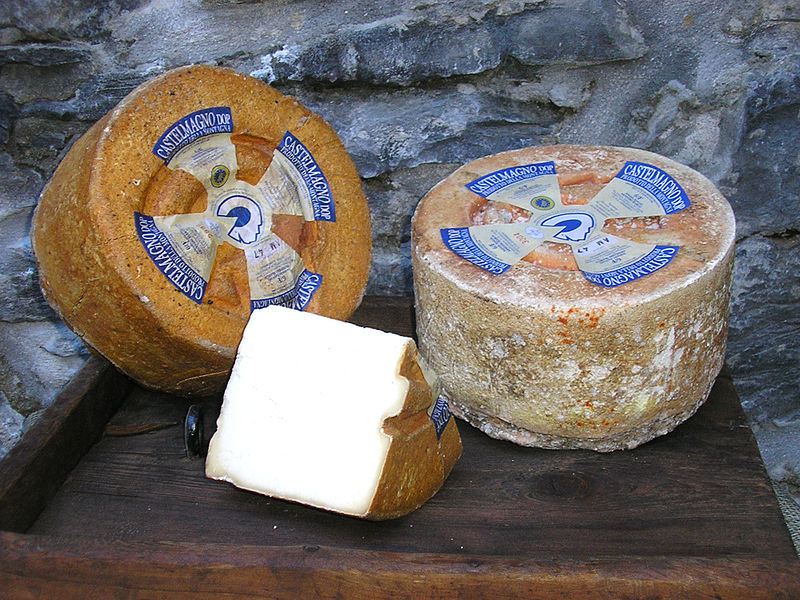Castelmagno
-
Made from pasteurized or unpasteurized cow's, goat's and sheep's milk
-
Country of origin: Italy
-
Region: Piedmont
-
Family: Blue
-
Type: semi-hard
-
Fat content: 34.2 g/100g
-
Calcium content: 4768 mg/100g
-
Rind: washed
-
Colour: ivory
-
Flavour: sharp, spicy, strong
-
Aroma: strong
-
Vegetarian: no
-
Vegan: no
-
Alternative spellings: Castelmagno PDO, Castelmagno di alpeggio, Castelmagno prodotto della montagna
Castelmagno is a PDO (DOP) awarded Italian semi-hard, semi-fat blue cheese prepared within the administrative region of the communes of Castelmagno, Pradleves and Monterosso Grana in the province of Cuneo, Piedmont. Castelmagno is an ancient cheese with origins dating back to 1277, more or less at the same time as Gorgonzola. It is named after a Roman soldier who, despite being persecuted, kept on preaching gospels and gave its name to the famous sanctuary town of Castelmagno in Grana Valley.
The cylindrical-shaped cheese is made from cow's milk with a small addition of sheep and/or goat's milk. The milk utilized must come from communes protected by PDO designation to guarantee the product's authenticity. The ageing takes two to five months to get the characteristic traditional flavour.
It is a dense cheese with no open holes tending towards a grainier, crumbly texture. The pate colour leans from ivory white towards ochre-yellow with the presence of bluish-green veins of penicillium moulds. Covering the pate is a thin reddish-yellow rind, which turns wrinkly, and brownish-ochre as the cheese matures. The subtle taste of Castelmagno gets stronger, spicier and sharper as it ages.
Barolo, Reciota della Valpolicella, Chianti pair well with this cheese. It is appreciated as a table cheese and used to prepare typical Italian dishes such as gnocchi.

Over 200,000 page views per month, Put your store on our map!
Contact Us
